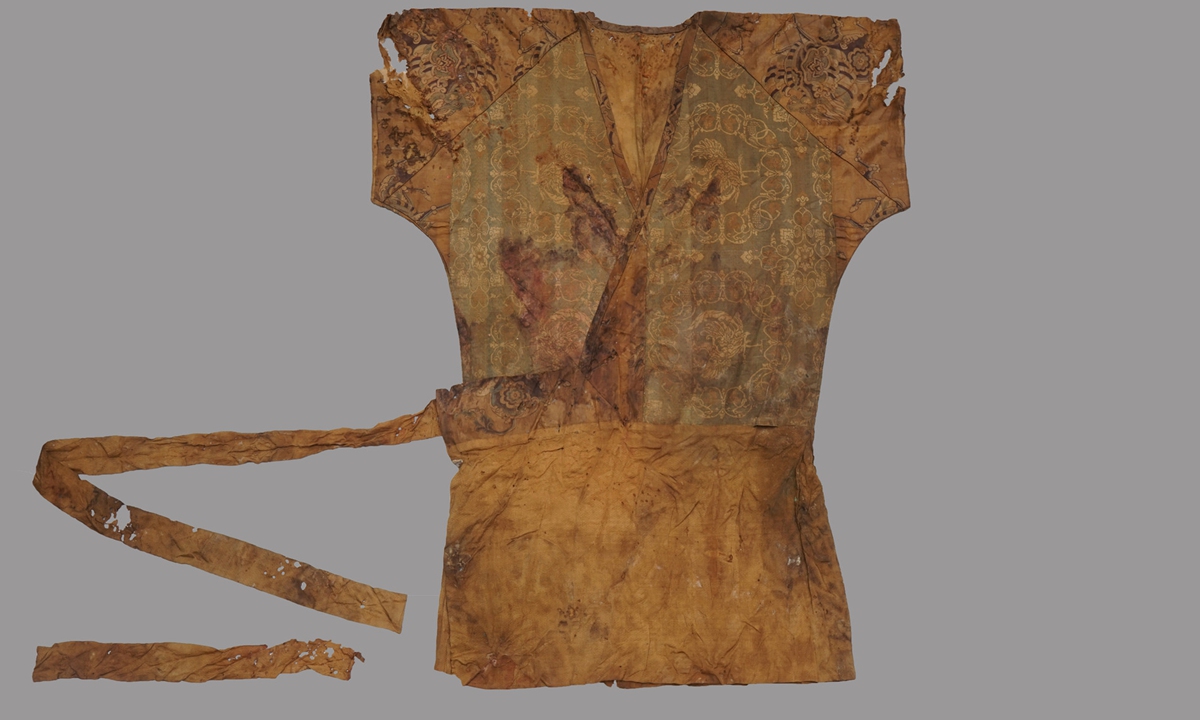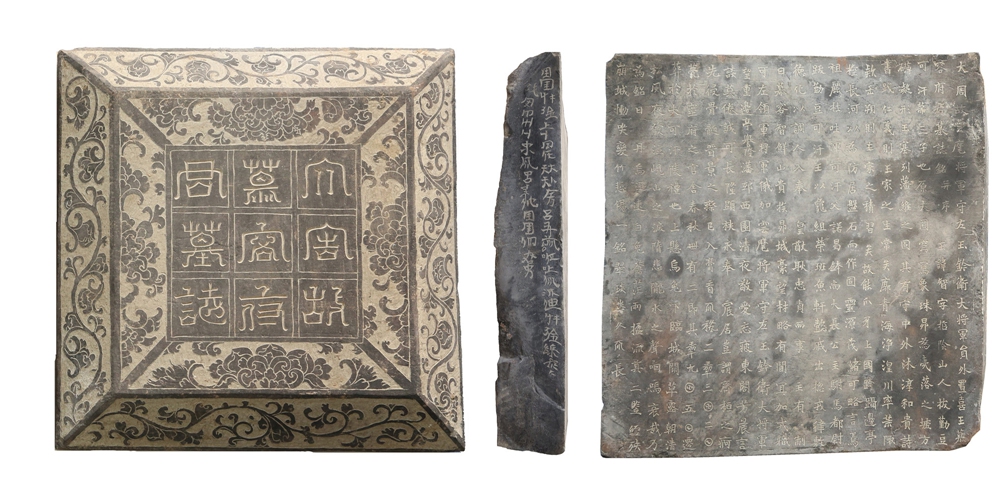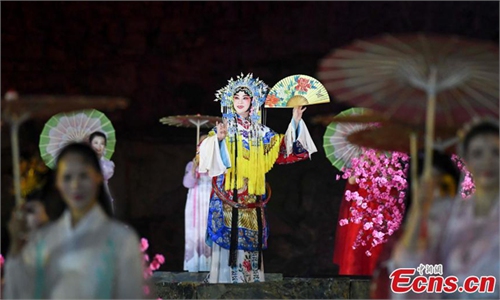ARTS / CULTURE & LEISURE
Archaeologists work to restore Tang Dynasty armor
Back to life

Tomb stones and clothing (top) unearthed from the tomb complex of Tuyuhun royal families Photos: Courtesy of China's National Cultural Heritage Administration

Tomb stones and clothing (top) unearthed from the tomb complex of Tuyuhun royal families Photos: Courtesy of China's National Cultural Heritage Administration
Zhang Wei was the first member of the archaeological team to enter the burial room, and he was in for a pleasant surprise.
On the coffin bed was a huge black-brown iron object that turned out to be the first complete set of Tang Dynasty (618-907) iron armor ever found in China.
Zhang, 39, with the Gansu provincial institute of cultural relics and archaeology, has been researching the tomb complex of Tuyuhun royal families since 2019, and it was in that first year that he found the armor.
Located in the city of Wuwei, Northwest China's Gansu Province, the complex was included in the list of China's top 10 archaeological discoveries of 2021, announced in late March. The rare armor was among several finds that make the site so valuable to researchers.
However, the discovery was only the first step in a long process that has yet to be completed. As of late March, the job of restoring and preserving this ancient object was entering its final phase, including the delicate work of desalination.
It has been a long road, and it started with the question of how to remove the find from the tomb without damaging it. The armor, which was located next to the coffin, was severely rusted but well-preserved as a whole. Getting it out in one piece would be a tricky job.
After some discussion, the team eventually decided to insert a large, thin wooden board beneath the armor, and carefully carry it out.
The complete set of iron armor consists of more than 2,000 individual plates in different sizes and arrangements, and each piece needed to be analyzed and processed individually.
The restoration process was complicated by the way the plates are strung, and the various textures and colors of the string material in different sections, Zhang noted.
With no contemporaneous relics for comparison, the restoration team could only figure out how to string those fallen plates back to the armor by referring to historical documents and information on the murals.
To ensure the restoration work went smoothly, the institute requested the assistance of Bai Rongjin, an expert in armor protection and research from the Institute of Archaeology, Chinese Academy of Social Sciences.
Whenever researchers came to an important step, Bai, who is now 87 years old, would come to Gansu to guide the restoration work.
Another area of complexity for the team was the difficult process of preserving iron relics. According to Zhang, iron-relic protection requires multiple steps, including rust removal, desalination, corrosion inhibition and sealing.
The rarity of the find is due in part to the rules governing burial practices during that period of history.
Liu Bingbing, associate research fellow with the institute, said, "It was generally not allowed to bury weapons and other military equipment without permission in the Tang Dynasty, and archaeologists had never unearthed any armor from Tang Dynasty tombs before."
However, the owner of the armor was a Tang Dynasty general called Murong Zhi, a member of the Tuyuhun people, and this may have had a bearing on matters, said Liu.
"The Tuyuhun people were accustomed to burying items used by the tomb owner during his lifetime, so we speculate that out of respect for ethnic conventions and his status as an imperial general, the royal court granted permission for weapons to be buried with him at the time," Liu said.
The ancestors of the Tuyuhun people were from the southern region of northeast China, and their branches later moved westward, gradually establishing an independent kingdom and ultimately surrendering to the Tang authorities.
"After that, most of their clansmen held high positions in the royal court of the Tang Dynasty," said Liu.
Because of the noble status of Murong Zhi, the suit of armor is different from that of ordinary soldiers. For example, the armor has leather on the shoulders and a silk lining.
Archaeologists also unearthed more than 800 pieces of textile, wooden lacquerware and other burial goods within the complex, including the earliest white wine found in China.
However, the armor is considered of special significance to researchers. According to Liu Bingbing, historical documents describe various types of armor in the Tang Dynasty, but previous research on its specific shape has relied mainly on murals and unearthed figurines.
"This discovery will provide a physical reference for the study of the production process and forms of armors in the Tang Dynasty," said Liu.
For Zhang, bringing the general's armor back to life has been a true labor of love.
"This restoration work will become a memory that I will never forget for the rest of my life," he said.



